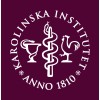Antiretroviral Treatment Strategies in Relation to Adherence, Resistance and Virological Treatment Failure (DotArv)
Human Immunodeficiency Virus (HIV)

About this trial
This is an interventional supportive care trial for Human Immunodeficiency Virus (HIV) focused on measuring Adherence, Peer support, Treatment failure
Eligibility Criteria
Inclusion Criteria:
- WHO stage IV of HIV disease, regardless of the CD4 count
- WHO stage III of HIV disease with a CD4 count < 350/mm3
- WHO stages I or II with a CD4 count < 200/mm3
Exclusion Criteria:
- Pregnancy
- Ongoing severe opportunistic infections
- Institutionalized patients.
Sites / Locations
- Hanoi Medical University
Arms of the Study
Arm 1
Arm 2
No Intervention
Experimental
Self Supervised Treatment (SST)
Enhanced Treatment Support (ETS)
Treatment according to the National Treatment Guidelines in Vietnam including treatment counseling before initiation of ART and clinical follow up every 3 months. The patient is self responsible to take the drugs and no additional adherence support is provided.
Treatment according to the National Treatment Guidelines in Vietnam including treatment counseling before initiation of ART and clinical follow up every 3 months. In addition adherence support is provided according to the description under intervention.
Outcomes
Primary Outcome Measures
Secondary Outcome Measures
Full Information
1. Study Identification
2. Study Status
3. Sponsor/Collaborators
4. Oversight
5. Study Description
6. Conditions and Keywords
7. Study Design
8. Arms, Groups, and Interventions
10. Eligibility
12. IPD Sharing Statement
Learn more about this trial
